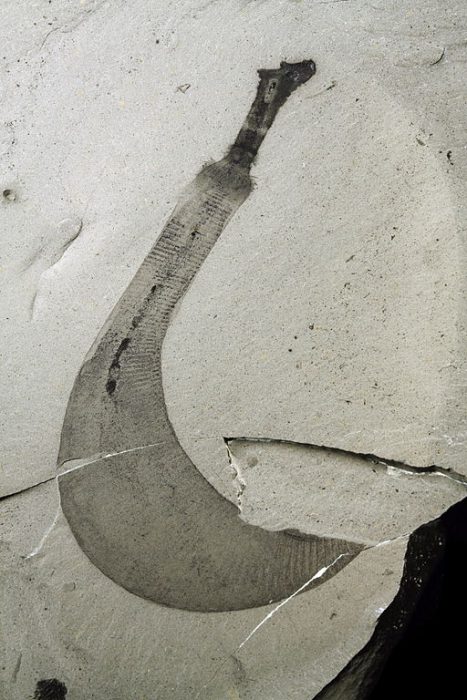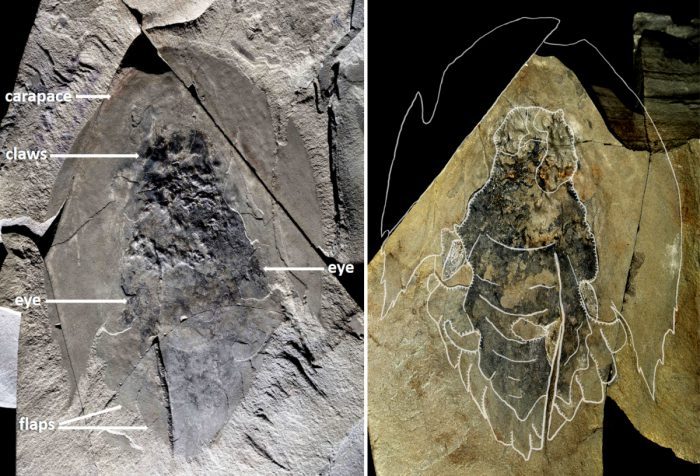Long before dry land became a dinosaur playground, the seas were full of creatures both bizarre and deadly. This was the time known as the Cambrian explosion. Starting around 541 million years ago, rising oxygen levels and competitive evolution helped to push marine life in revolutionary new directions.
What do we mean?
Before the Cambrian, life was simple and rooted to the sea floor. What was for dinner? Anything that floated by! There were no animals that could swim by themselves, no hunters or foragers.
But the Cambrian explosion brought an unbelievable array of new body parts. Hard shells. Flexible limbs. Backbones. Locomotion. Even eyes! Suddenly living things could hunt, look for danger, escape, protect themselves. Every major branch of animals has its origins in the first 25 million years of the Cambrian.
And with all of that out of the way, we'd like for you to meet one of them: Cambroraster falcatus (say KAHM-broh-rahs-tuhr fall-KAH-tuhs). Have a look below...
Spaceship of the early seas
The first part of this predator's name — Cambroraster — means "Cambrian rake". The second? It comes from its resemblance to the Millennium Falcon of Star Wars fame. No word on whether or not this animal was capable of light speed, but it would've been reasonably quick for its time. Not that it was chasing down food.
Its nasty circular mouth would've allowed it to make short work of whatever it found on the seafloor. Scientists guess that it used the rake-like limbs around its mouth to dig into mud and silt. If it found something yummy, it got vacuumed up quickly into its round maw. Gobble gobble!
Burgess Shale

That's not a knife... it's a fossil of a Cambrian period sea worm called Ottoia tricuspida that was found at the Burgess Shale. (Martin R. Smith/Wikimedia Commons)
Paleontologists from the Royal Ontario Museum (ROM) discovered this fossil at a place called the Burgess Shale. If you've never heard of the Burgess Shale before, we think it's worth talking about it for a moment. After all without it, we wouldn't know about Cambroraster falcatus, or much about the Cambrian at all.
The Burgess Shale is an area in the Canadian Rockies in British Columbia. It is a very important fossil deposit that is famous for its collection of specimens of animals with soft body parts from around 508 million years ago. What are the fossils like there? And why are they so important? We think that this video from the ROM does a great job of explaining this. Enjoy!
 The fossil of C. falcatus labeled to how the actual animal likely overlapped with this specimen. (Jean Bernard Caron/Royal Ontario Museum)
The fossil of C. falcatus labeled to how the actual animal likely overlapped with this specimen. (Jean Bernard Caron/Royal Ontario Museum)










Cool